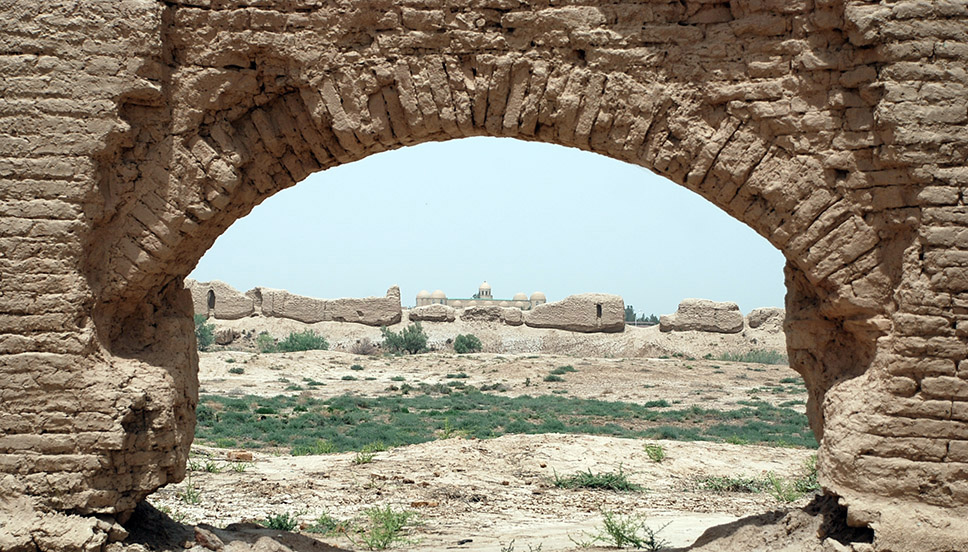The modern Turkmenistan has three famous ancient oases, World Heritage Sites!

Nisa oasis was part of Parthian empire, one of its earliest capital with Parthian royal complex built in Old Town. This center played important role representing Parthian state at its northern border, had the important diplomatic connection with the nomadic unions of the desert and the steppe to the north, protecting trade routes in the region. Some artifacts prove even the connections with Scythian tribes in Altai, in south-west of Siberia.

Kunya Urgnech / Old Urgench was once a capital of Khoresm Shakhs powerful state and part of Amu Darya regional civilization. Now, the main part of ancient Khoresm is in Uzbekistan. The historic remains of the town proves the high level of architecture, sciences and urban life in X- XII centuries and witness the masterpieces of XIV – XV centuries monumental architecture, the last attempt of renaissance after Genghis Khan Invasion in beginning of XIII century. To have full picture of Khoresm have to travel in both countries: Uzbekistan and Turkmenistan.

Merv oasis is the largest history and cultural center in Turkmenistan, the part of famous ancient great region of Khorasan. Since the Bronze Age, it was the important part of trade and handicraft triangle between the Indus Valley and Mesopotamia, known as Margush or Margiana (BMAC). Starting from the Antiquity the important trade center in Central Asia, the multi-religious agglomeration. In the medieval period becoming the metropolis of Khorasan area, adding as the center for crafts, and the development of the sciences.
All other medieval monuments, the remains of small towns, the caravanserais traces witness the trade connections with the above history centers, like Dekhistan town, and beyond to Iranian plateau. From another side to Bactria, Samarkand, Bukhara.
Reference to the Stone Age history centers in the country. They are part of the global migration processes of VII – III millenniums BC, from Iranian plateau up to Siberia spaces and since III millennium BC in the reverse direction. In Turkmenistan, they symbolize the migration arrows of different groups of people: one is from south-west to northeast and the second was from the west through the desert to the north. The largest settlements are Jebel cave, Jeytun Depe culture, Anau periods, Namazga cultures, earliest periods of Altyn Depe and settlements in Dashoguz region.
For a history lover it is quite interesting region representing the transit of cultures, states at different epochs of world history. The interconnection of Central Asia vividly represent the colorful history of people who left there the variety of rich cultural layers opening us the secrets of the past.
Pls. use the left menu to read more about the region, the different articles from our library. Thank you so much!